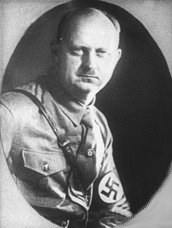Ikiru
 A terminally ill middle aged man wants to live.
A terminally ill middle aged man wants to live.
The film "Ikiru" brings to us this man's struggles to come to terms with his imminent death and his attempts to find a meaning for the rest of his life. "Ikiru" means "To live".
The film was directed by the Japanese filmmaker Akira Kurosawa in 1952, writen by Shinobu Hashimoto and Akira Kurosawa himself, with Takashi Shimura playing Kanji Watanabe, the protagonist.
The film mainly revolves around Kanji Watanabe, his life at work and his endeavors to complete his life in a meaningful way. Watanabe is a bureaucrat in a city office. With an indifferent modus vivendi, he is nicknamed "mummy". When he comes to know of his stomach cancer he realizes that his life has almost ended but he had not done anything of mentionable worth in his life. He wants to set it right, enjoy his life and make his life worthy.
The film also gives an idea of the apathy that cocoons the bureaucracy from the common man. Though I have not known how it would be in many of the situations shown in this movie, the scenes in the City office reminded me of the legend of work ethics in government offices. The complaints are simply passed between almost all departments but never worked on. This is expertly shown in a short sequence where some people approach the Citizens Unit with a complaint on the stagnant water and mosquitoes in their neighbourhood. Watanabe is the Citizens Unit head. They get bounced off almost every City unit before completing the cycle, Watanabe being the one who started the cycle.
Shimura has given an absolutely admirable performance as a tired man, searching for his lost life. The years of boredom that Watanabe had cultivated in his life, has made him a bore and Shimura looks every part a bore that Watanabe is.

Be it experiencing the frenzied Tokyo nightlife with a writer or singing the song "Life is too short" (English translation of Gondola no Uta) in a deep, seemingly emotionless voice or trying to cling on to the young woman who gives him hope with her youth and verve, Shimura is very convincing and deserves as much credit as Kurosawa.
The film has a gloomy outlook, is simple and, in places, sentimental. However, this emotionalism does not undermine the way the man's life is shown, just as such a man's life will be. Watanabe's struggles can not only be seen on the screen but felt too. The scenes where Watanabe desperately wants to talk with his son and when he begs the young woman to teach him how to be lively like her are touchy. The last scene showing a happy Watanabe on a swing, singing away his last moments, is very artistic and remains in memory.
As much as the acting and direction, the screenplay and editing also deserve special mention for making the viewing of a slow-paced gloomy movie an absolute pleasure.
My first Kurosawa film. It was not only a joy to watch but quite an experience too.
Trivia -
Takashi Shimura, who played a doctor's role in 'Godzilla' ('Gojira (1954)'), has acted in 19 films for Akira Kurosawa.
The song Gondola no Uta was composed by Shimpei Nakayama and the lyrics were writen by Isamu Yoshii.
You can find more information on "Ikiru" here.




